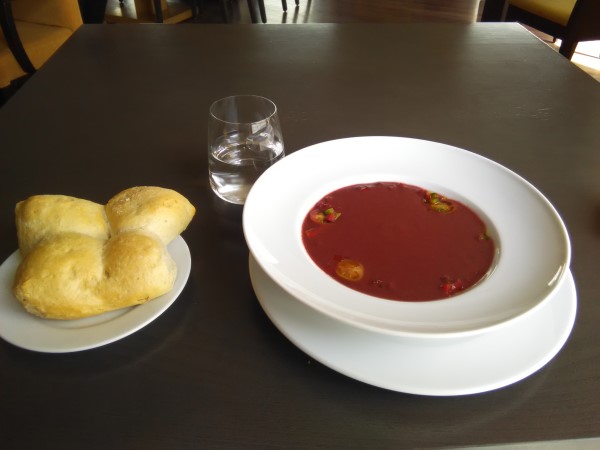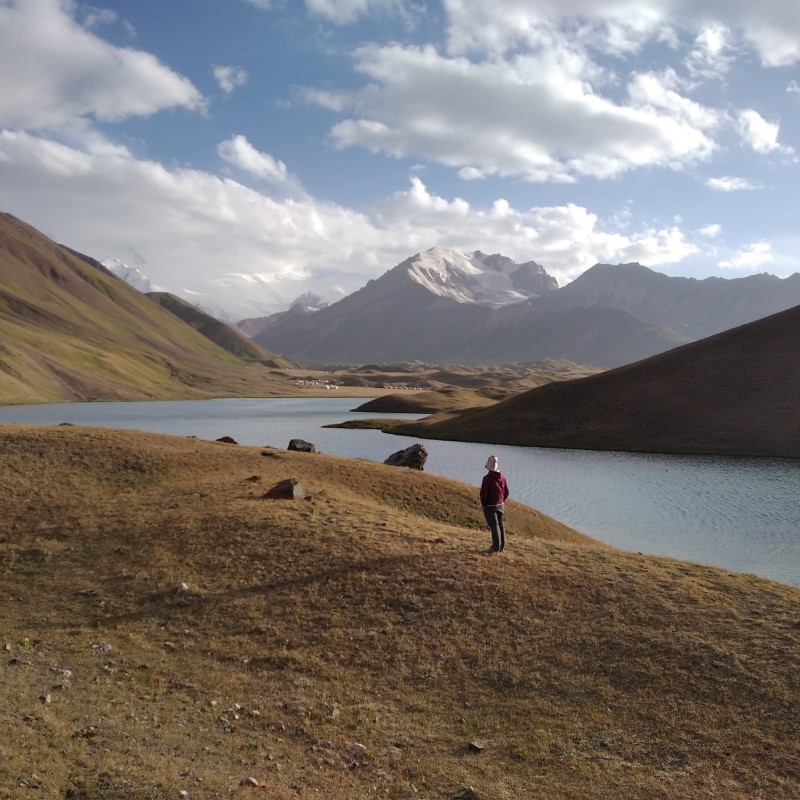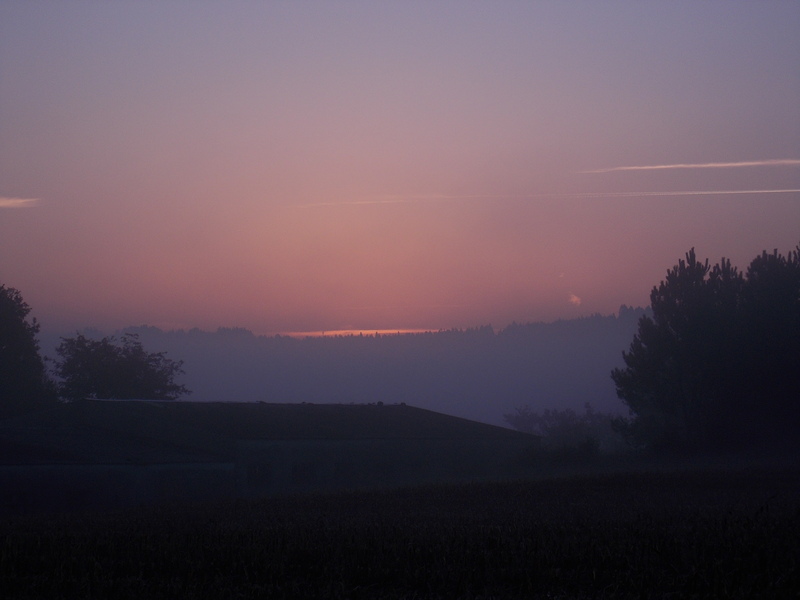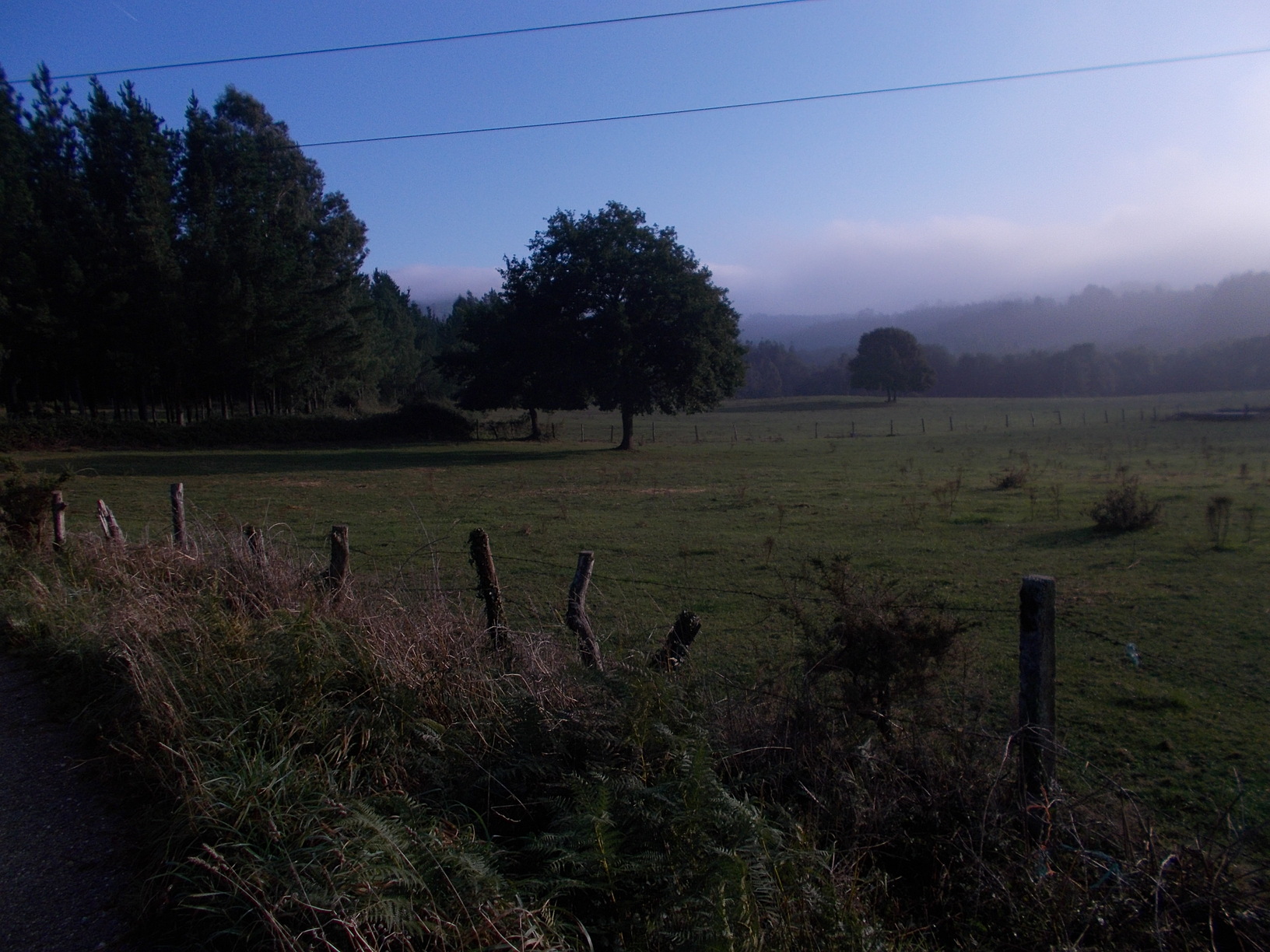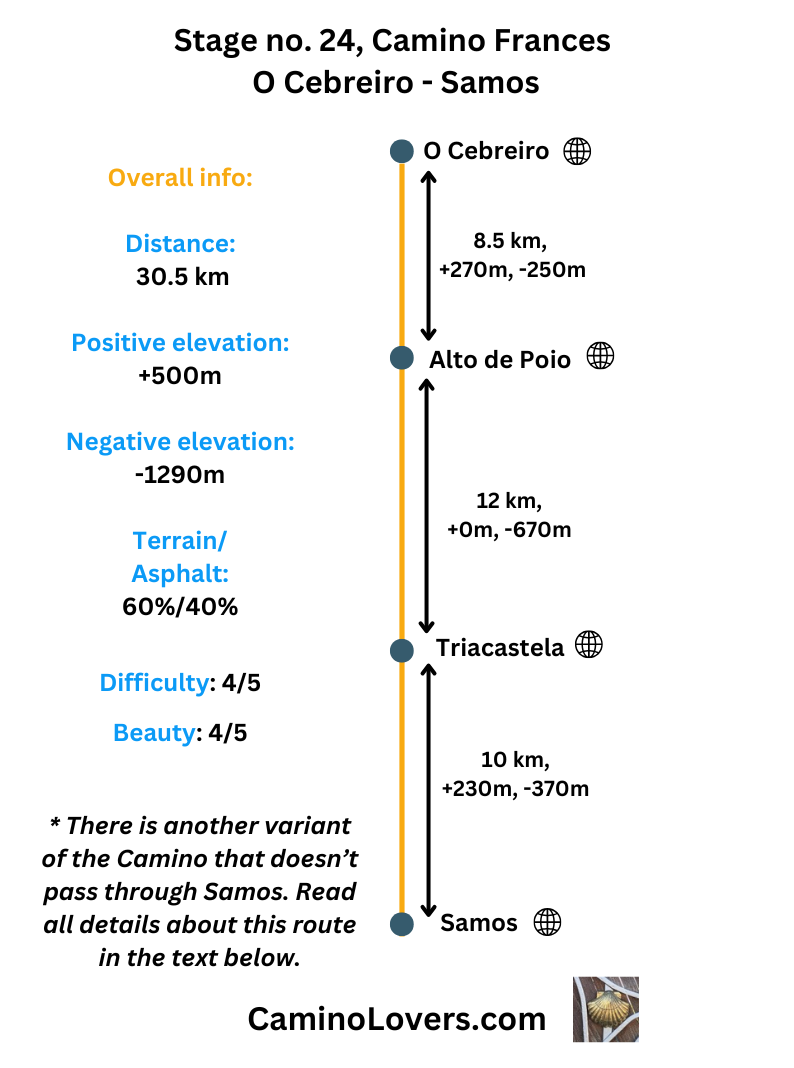
Basic Information
- Starting Point: O Cebreiro, Spain (1,330m) – Famous Galician mountain settlement with Celtic-style pallozas, solemn church from 9th century (one of the oldest on the entire camino), two pilgrim albergues and few other accommodation options. While it is one of the victims of the success of Camino Frances (almost a tourist trap nowadays), it still has its charm and the views from the top are unforgettable, especially after the long climb.
- Ending Point: Samos, Spain (530m) – Monastic town dominated by the massive Benedictine Abbey. Beautiful town with three pilgrim albergues (one directly in the monastic complex), some private accommodation options and all services for pilgrims, including a shop and a pharmacy.
- Alternative Routes Available: YES. There is an alternative route, this time labeled as one of two official options, that avoids Samos altogether, and goes directly to a small village called Aguiada. It saves you about 7.5 km of walking, and it is also a nice way, but it avoids the monastery of Samos. It is up to your preference which of the two you pick. I will describe the alternative route more in the advanced section of this post.
- Distance:
- Online Map: Camino to Samos: map. The alternative route directly to Aguiada: map.
- Elevation Difference: Official camino to Samos: + 500 m ascent, – 1290 m descent. Direct alternative to Aguiada: + 550 m ascent, – 1,340 m descent.
- Difficulty Score: 4/5, but for pilgrims who tend to have knee problems the difficulty can easily be 5/5. There aren’t many days on any Camino de Santiago where one drops over 1,000 meters walking on a single day. Climbs are hard for the lungs but descents are where most walking problems develop, be it with your knees, Achilles, or with your back.
- Beauty Score: 4/5 – Both the official route to Samos and the variant which avoids it are very beautiful, passing through peaceful green landscape of Galicia.
- Terrain/Asphalt Ratio: 60% forest trails, 40% asphalt, on the road, or close to the road.
- Next stage: Camino Frances Stage no. 25, Samos – Sarria.
- Previous stage: Camino Frances Stage no. 23, Villafranca del Bierzo – O Cebreiro.
Elevation profile for the routes

– Camino variant to Samos. You spend the first 13 kilometers on the ridge, with some small but noticeable ups and downs, with climb gradient often surpassing 10%. From then on it is mostly downhill, but the occasional short steep hills in the last part of today’s stage surprise many tired pilgrims. The hardest section for the knees is between km 16 and km 20, where on little over 4 kilometers you drop over 500 vertical meters.

– Alternative route avoiding Samos, going directly to Aguiada. The first 20 kilometers are identical to the camino to Samos, but the last 14 are different. Instead of many small uphills and downhills, this alternative is more one gradual uphill between km 20 and 26, and then a gradual downhill all the way to Aguiada. Keep in mind that this route is almost 4 km longer, and people who do not go to Samos tend to stop in Triacastela (km 20), where the two routes split.
Advanced Info About the Stage
- Trail Marking: Excellent, with stone markers and plenty of yellow arrows. The division between the camino through Samos (the alternative we suggest) and the direct way to Sarria avoiding Samos is clearly indicated in Triacastela. The Samos variant has additional bronze scallop shells on the way. Any of the two alternatives you choose, you won’t get lost.
- Alternative route info: In this section there are basically two ‘official camino ways’, as neither of the two can be called alternative. The only difference is whether you prefer the way over Samos (to see the monastery and the beautiful small town surrounding it), or the other one. The other way passes through nice landscapes, peaceful forests and small Galicean hamlets, and also saves you about 7.5 kilometers in total. Most pilgrims actually take it, and I would say nowadays the split is about 50:50. The direct route (the one we call alternative here, the one avoiding Samos) has a bit more services on the route (bars, restaurants, etc). This is also something you can take into consideration when deciding which one to take. If you cannot decide, you can always flip a coin and simply see :).
- Natural Highlights: The entire stage is very nice. On the first few kilometers you’ll pass one of the highest points of the Camino Frances, and the highest point in Galicia, called Alto do Poio, at 1,337m above sea level. Location on Google maps here. The views are hard to forget. Then another highlight is a huge chestnut tree, over 800 years old. It is right on the camino, close to Triacastela, location on Google maps here. And then of course you have the valley of the river Oribio, leading all the way to Samos. No need to make any detours here, just enjoy the nice path winding though chestnut forests and meadows, all the way to Samos.
- Historical & Cultural Highlights:
- Monastery of Samos: 6th-century abbey with stunning frescoes. Beautiful from both outside and inside, especially the paintings on the walls. One of the oldest monasteries in Europe. There is a mass every day at 19:30. And there are guided tours every day, starting about every hour, with a siesta break between 2pm and 4pm. Location and reviews on Google maps here.
- Local Cuisine: Order pulpo á feira (Galician octopus) in Samos’ plaza, or one of the Triacastela’s restaurants. While there will be more famous places for trying the octopus on your way, they are also more expensive, so this is a good chance to try it, when you do the camino on budget.
- Camping/Bivouac Options: There isn’t any official camping place on this stage. However, due to the nature of the way (both alternatives), it isn’t hard to find a spot to pitch a small tent, hidden from the eyes. Just make sure to avoid private properties and cows :). Some of the small chapels on the way, or very close to it, have covered porch that will protect you from rain and wind and you can bivouac there in case of emergency . For example this one on the way to Samos, and this one on the alternative route.
- Dog-Friendly Score: 4/5. A nice day for dogs. Both ways offer enough shade and mostly good terrain for your beloved companion, but the way to Samos offers much more water. It follows the river valley and actually crosses the river on several occasions, so it is easy for your dog to cool down, even on a hot day. The problem of this stage, however, can be livestock, so if your dog enjoys running after cows, make sure to keep it on the leash :). The albergue in the monastery of Samos accepts dogs.
- Special Remarks: You drop over 1,000 vertical meters on this stage, which is hard for everyone, let alone for a pilgrim with a big backpack and some knee issues. Take it into consideration, and if it seems like too much for you, stop in Triacastela instead. It is also a good idea to make frequent breaks on the steep descents, to allow your knees to rest for a while, preventing inflammation and related problems.
My picks for accommodation on this stage
- Albergue Linar do Rei, Linares (km 3). Very new, clean, and modern albergue. Ideal choice for people who reach O’Cebreiro but do not get a bed in the albergue. Great views, perfectly equipped kitchen, modern facilities. 20 beds in dorms, 14 euro/bed. Has also some private room options. Check-in from noon to 6:30pm, you can make a reservation on the following phone number: +34 616 464 831. Location and reviews on Google maps here.
- Albergue-Pensión Complexo Xacobeo, Triacastella (km 20). In general the albergues in Triacastella are quite good, and you will find 8 there! If I should pick one that stands out in a way, however, it will be this one. For the spacey rooms, wooden ceilings, beautiful new installations, restaurant on-site. 36 beds in dorms, plus 14 private rooms, 14 euro/night. Open form early morning (you can check-in at any time, for example in case of a bad weather), good kitchen, menu in the restaurant (15 euro), great reviews across all pilgrim platforms. You can check the location, reviews, and make your booking directly on Booking, exactly here.
- Albergue Monasterio de Samos (km 30): A rough donation-based albergue in the monastic style. Basically one big room with 32 beds and nothing more. Donation-based, doesn’t accept reservations, check-in from 2pm. While it isn’t as nice as some donativo places are, it allows you a chance to try a monastic life for one day :), and you can also sleep in one of the oldest monasteries in Europe. Location and reviews on Google maps here. * Note April 2025: There were recent complaints about the neglect and bed bugs in this hostel. Please check-it out before checking in.
- Hotel A Veiga, Samos (km 30): This beautiful hotel with affordable prices is your best bet for a bit of privacy in Samos. Everything is clean and well maintained, there is a traditional Spanish restaurant on site, and prices start from 40 euro/single room and 50 euro/double room. Highly-rated across all pilgrim and non-pilgrim platforms, you cannot go wrong with this hotel. You can check the reviews and make your booking directly on Booking, exactly here.
Pictures from then stage
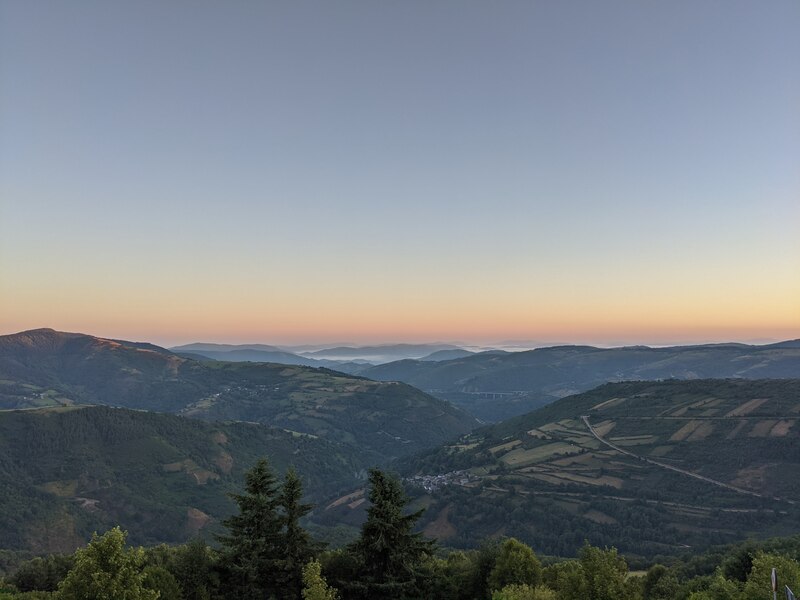 – The early morning views from O’Cebreiro are hard to beat…
– The early morning views from O’Cebreiro are hard to beat…
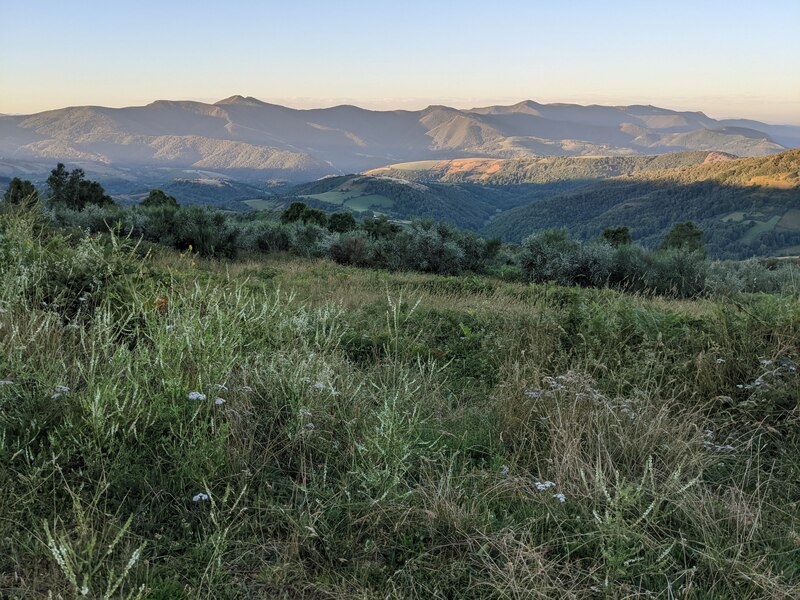 – Beautiful scenery in the morning light. Waking up early on the Camino definitely pays off 🙂
– Beautiful scenery in the morning light. Waking up early on the Camino definitely pays off 🙂
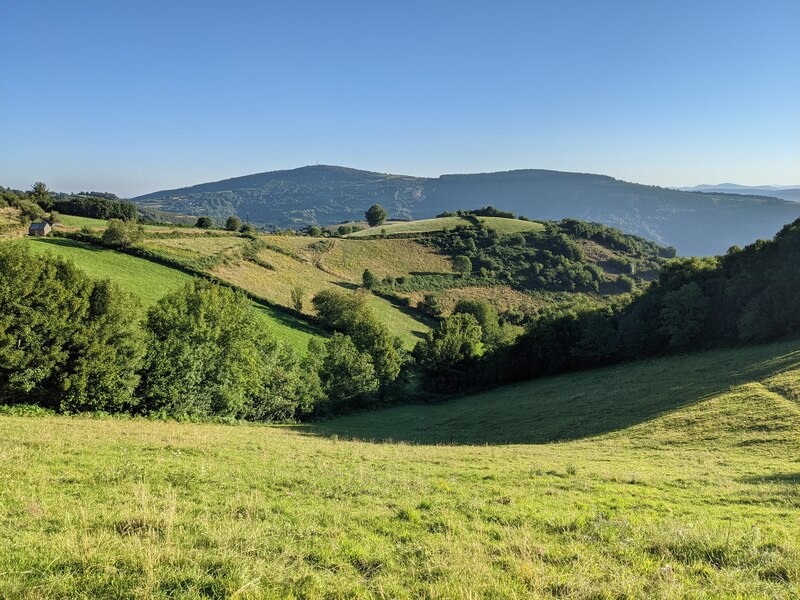 – Beautiful Galicean countryside
– Beautiful Galicean countryside
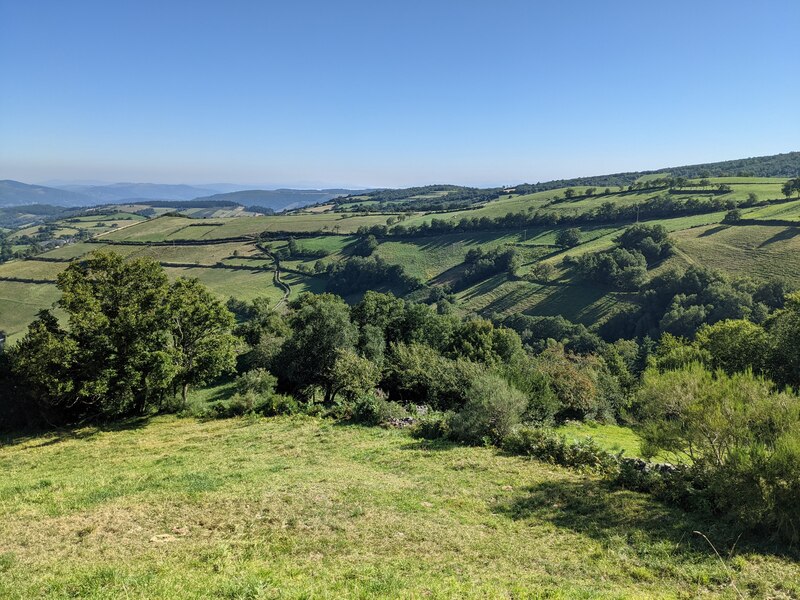 – And one more time…
– And one more time…
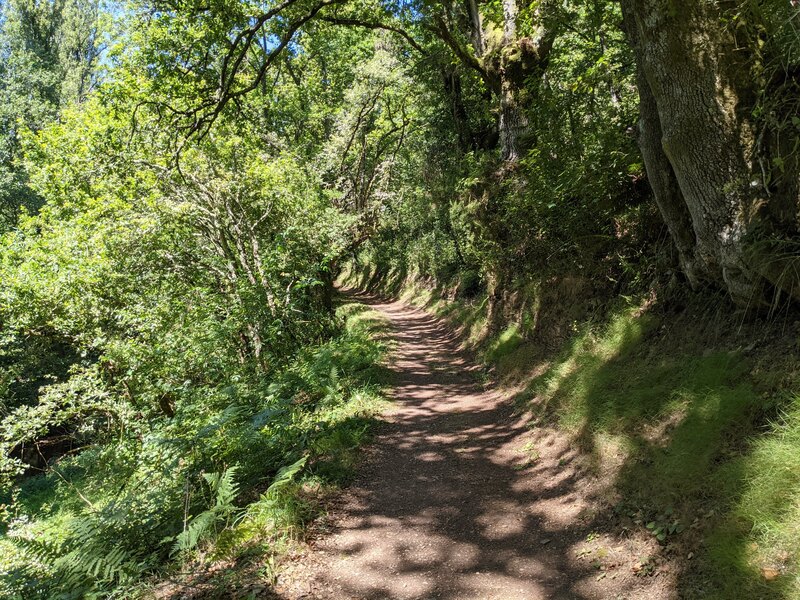 – The forests in the second part of today’s stage help in the heat of the day.
– The forests in the second part of today’s stage help in the heat of the day.
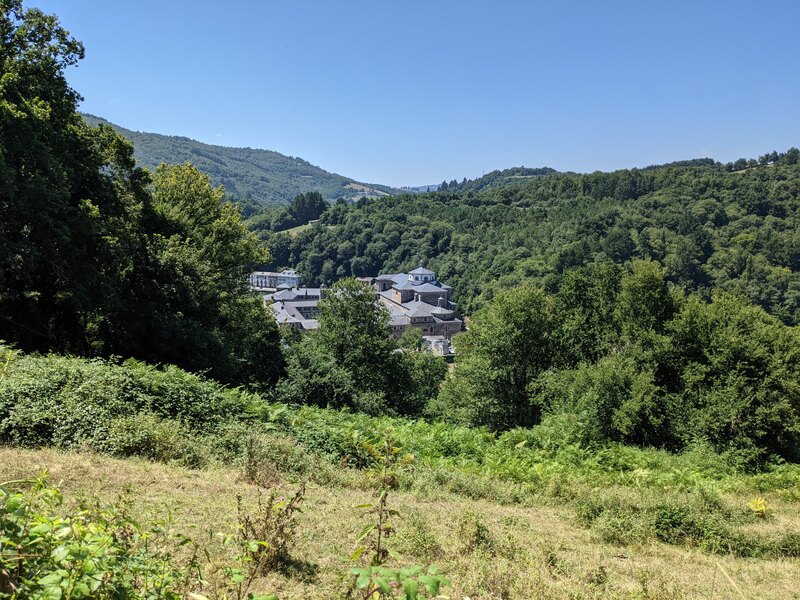 – The monastery of Samos, from the distance
– The monastery of Samos, from the distance
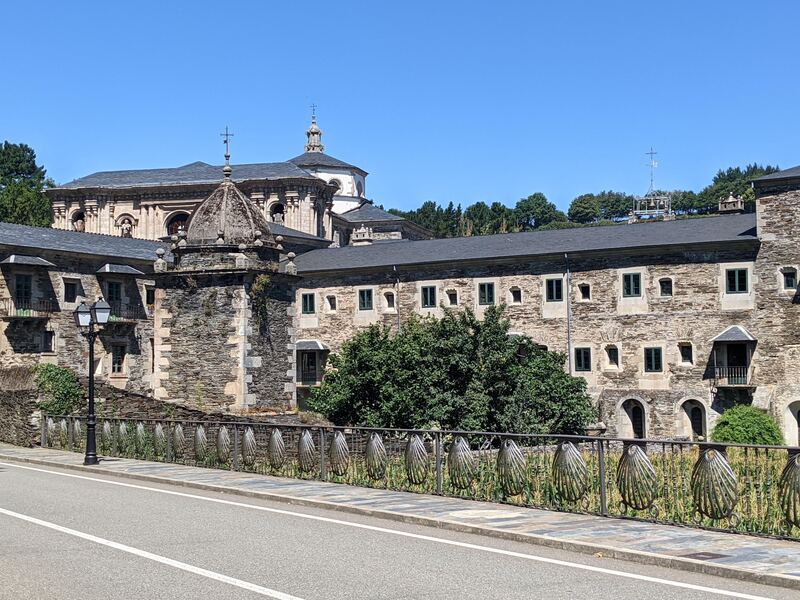 – Detail of the monastic complex.
– Detail of the monastic complex.
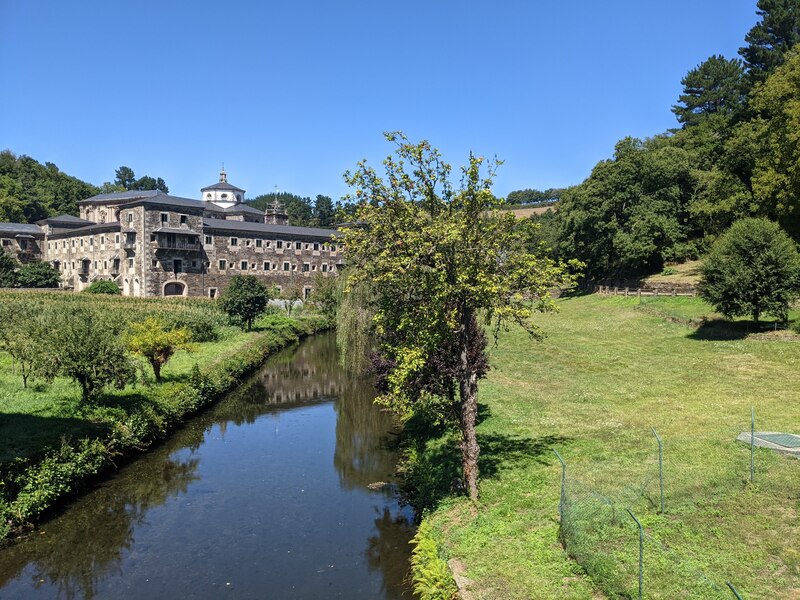 – And one more time the beautiful monastic complex of Samos.
– And one more time the beautiful monastic complex of Samos.
Few tips at the end
- The last guided tour in the monastery of Samos starts at 6:30 pm. Take it into consideration when planning your day. It would be a shame walking to Samos to visit this beautiful monastery and missing on the schedule. The first one in the morning starts only at 10 am, which is too late for a pilgrim.
- If you walk without hiking poles, grab some decent sticks in the woods (shouldn’t be a problem on this stage) for the part between km 16 and km 20, which is the steepest descent. Then you can just throw them away to the forest again. Your knees will thank you :).
Next/Previous stage
- Next stage: Camino Frances Stage no. 25, Samos – Sarria.
- Previous stage: Camino Frances Stage no. 23, Villafranca del Bierzo – O Cebreiro.
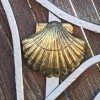


![Ultralight Packing List for Camino de Santiago [2025 Edition]](https://caminolovers.com/wp-content/uploads/2022/03/altra-shoes-640-x-480.jpg)
